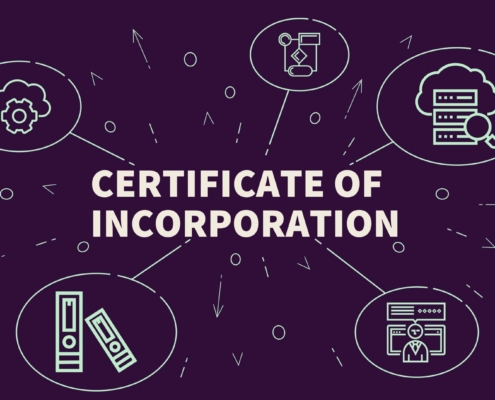Unjust Enrichment Definition
The unjust enrichment claim has long allowed recovery for money paid by mistake or when contract formation fails. “In general, a person who has been unjustly enriched at the expense of another is required to make restitution to the other.” (Rest., Restitution, § 1.) “Ordinarily the benefit to the one and the loss to the other are co-extensive, and the result . . . is to compel the one to surrender the benefit which he has received and thereby to make restitution to the other for the loss which he has suffered. In other situations, a benefit has been received by the defendant but the plaintiff has not suffered a corresponding loss or, in some cases, any loss, but nevertheless the enrichment of the defendant would be unjust. In such cases, the defendant may be under a duty to give to the plaintiff the amount by which he has been enriched.” Unilogic, Inc. v. Burroughs Corp. (1992) 10 Cal.App.4th 612, 627–628.
Example: Sarah builds a fence on what she mistakenly believes is her property. Later, she discovers that part of the fence is on her neighbor Mark’s land. Mark refuses to pay Sarah for the cost of the fence but enjoys the increased privacy and property value. Sarah files a claim for restitution, asserting that Mark’s benefit is unjust.
What are the elements of unjust enrichment in California?
The elements of an unjust enrichment claim are the ‘receipt of a benefit and [the] unjust retention of the benefit at the expense of another.’ The elements of a claim of unjust enrichment include:
- Receipt of a benefit.
- Unjust retention of the benefit at the expense of another. (Peterson v. Cellco Partnership (2008) 164 Cal.App.4th 1583.)
To determine if Plaintiff wins a lawsuit, the jury is given this instruction (CACI 4410):
Defendant was unjustly enriched if his misappropriation of Plaintiff’s e.g., trade secrets caused Defendant to receive a benefit that he otherwise would not have achieved.
To decide the amount of any unjust enrichment, first determine the value of Defendant’s benefit that would not have been achieved except for his misappropriation. Then subtract from that amount Defendant’s reasonable expenses, including the value of the e.g., labor, material, rent, capital, etc.
In calculating the amount of any unjust enrichment, do not take into account any amount that you included in determining any amount of damages Plaintiff’s actual loss. A person who has been unjustly enriched at the expense of another is required to make restitution to the other. (CTC Real Estate Services v. Lepe (2006) 140 Cal.App.4th 856.)
Example: Emma pays $1,000 to a contractor, thinking he repaired her roof. Later, Emma discovers that the contractor accidentally repaired her neighbor’s roof instead. The neighbor enjoys the benefit of the repairs but refuses to pay the contractor, leading to an unjust enrichment claim.
Element 1: Receipt of a Benefit
“The doctrine of unjust enrichment is regarded as usually underlying recovery in quasi-contractual situations.” Desny v. Wilder, 46 Cal. 2d 715.
Quasi-contractual recovery depends upon the defendant’s receiving some benefit. (Day v. Alta Bates Medical Ctr. (2002) 98 Cal.App.4th 243.)
Example: Leo mistakenly pays a water bill for his neighbor, Chris. Chris realizes the mistake and enjoys free water service but refuses to reimburse Leo. Leo sues Chris for unjust enrichment.
Benefit Means Any Type of Advantage
A person is enriched if the person receives a benefit at another’s expense. Benefit means any type of advantage. (Meister v. Mensinger (2014) 230 Cal.App.4th 381.)
Example: Maya provides landscaping services, mistakenly thinking a property belongs to her client. The actual owner, Robert, enjoys the beautification but refuses to pay for the service. Maya files a claim for unjust enrichment.
Sparing Expenses or Loss Is a Benefit
For purposes of unjust enrichment, “benefit” is conferred not only when one adds to property of another, but also when one saves the other from expense or loss. (Faucetta v. Red Planet Ranch (2003) Cal.App.Unpub. LEXIS 9517.)
Example: A factory owner accidentally installs pollution control equipment on a neighbor’s facility instead of their own. The neighbor refuses to pay despite benefiting from regulatory compliance.
Plaintiff Must Confer Benefit Upon Defendant
Plaintiff has no right to sue for restitution where plaintiff did not confer a benefit upon the defendant. (Hirsch v. Bank of America (2003) 107 Cal.App.4th 708.)
Example: Zoe demands payment for a website she developed, believing she was hired by Alex. It turns out Alex never agreed to the service. Since Alex did not request or benefit from the website, Zoe cannot claim unjust enrichment.
Element 2: Unjust Retention of Benefit
Gravamen of quasi-contractual action grounded on unjust enrichment is an equitable principle that one should not be allowed to enrich himself at the expense of another. (Howard Mills v. Bellwood Laundry & Linen Supply (2007) Cal.App.Unpub. LEXIS 9192.)
Example: A courier mistakenly delivers a rare painting to the wrong recipient, who keeps it despite knowing it was misdelivered. The rightful owner sues for its return and restitution.
Is unjust enrichment a cause of action in California?
Unjust enrichment is recognized as a claim in California courts, though its classification and interpretation can be nuanced. The doctrine is based on equity and seeks to prevent one party from being unjustly enriched at another’s expense. While there has been some debate in California law over whether unjust enrichment is an independent cause of action or merely a remedy, it is effectively treated as a legal theory supporting restitution claims.
Definition and Elements of Unjust Enrichment
Unjust enrichment occurs when one party retains a benefit that is unjust to keep under the circumstances. In California, it is typically treated as an equitable principle that underpins restitution claims. The essential elements of unjust enrichment include:
- Receipt of a Benefit: The defendant received money, services, or property.
- Unjust Retention: The defendant’s retention of that benefit would be inequitable.
For example, the California Court of Appeal in Durell v. Sharp Healthcare (183 Cal.App.4th 1350 (2010)) held that unjust enrichment occurs when a defendant benefits at the expense of the plaintiff in circumstances where it would be unjust to allow retention of the benefit.
Unjust Enrichment as a Cause of Action
Although some courts have questioned whether unjust enrichment constitutes an independent cause of action, California courts have clarified its role. For instance:
- In Melchior v. New Line Productions, Inc. (106 Cal.App.4th 779 (2003)), the court stated that unjust enrichment is not a standalone cause of action but a principle of restitution.
- Conversely, other courts and practitioners argue that unjust enrichment can be pleaded as a distinct cause of action, particularly where the claim alleges that the defendant unjustly retained a benefit, as seen in Ghirardo v. Antonioli (14 Cal.4th 39 (1996)).
This dichotomy highlights that unjust enrichment is often pleaded as part of broader claims for restitution or quasi-contract.
Application in California Courts
Unjust enrichment is particularly applicable in scenarios involving mistake, fraud, or quasi-contractual relationships. A typical case might involve:
- Mistaken Payments: If one party mistakenly transfers money to another, as in the example provided with Alex and Jordan. Alex’s claim would rest on the assertion that Jordan’s retention of the $5,000 is unjust under the circumstances.
- Fraudulent Transactions: If a party benefits from fraudulently obtained goods or services.
- Implied Contracts: Situations where the court implies a contract to prevent unjust enrichment, even though no formal agreement exists.
In First Nationwide Savings v. Perry (11 Cal.App.4th 1657 (1992)), the court allowed a claim for restitution on the basis of unjust enrichment, emphasizing that equity demands fair outcomes when one party retains an undeserved benefit.
Example Analysis
- Facts: Alex accidentally deposits $5,000 into Jordan’s account. Jordan knowingly spends the money on a vacation.
- Legal Theory: Alex sues Jordan for unjust enrichment, arguing that Jordan was unjustly enriched by receiving and spending money that was not rightfully his.
- Application: The court would analyze whether Jordan received the $5,000 as a benefit and whether his retention and use of the funds were unjust under the circumstances. The absence of a contractual relationship would not bar recovery, as the claim is grounded in equity.
In such a case, Alex’s likelihood of success is high, as courts typically recognize unjust enrichment claims in mistaken payment cases.
Challenges in Pleading Unjust Enrichment
Despite its broad equitable application, unjust enrichment claims can face challenges:
- Lack of Independent Status: Some courts may dismiss an unjust enrichment claim on the grounds that it is not a standalone cause of action, requiring plaintiffs to reframe their claim as one for restitution or quasi-contract.
- Overlap with Other Claims: Unjust enrichment often overlaps with claims of fraud, breach of fiduciary duty, or breach of contract, which may complicate litigation strategies.
What are the remedies for unjust enrichment?
Constructive Trust as a Remedy for Unjust Enrichment
The constructive trust is an equitable remedy to prevent unjust enrichment and enforce restitution, under which one who wrongfully acquires property of another holds it involuntarily as a constructive trustee, and the trust extends to property acquired in exchange for that wrongfully taken. (La Paglia v. Superior Court (1989) 215 Cal.App.3d 1322.)
Example: Olivia steals funds from a joint business account and uses the money to buy luxury jewelry. The court imposes a constructive trust over the jewelry, requiring Olivia to return it to the business partner.
Restitution as a Remedy for Unjust Enrichment
A person who has been unjustly enriched at the expense of another is required to make restitution to the other. County of Solano v. Vallejo Redevelopment Agency, 75 Cal. App. 4th 1262.
Example: A company accidentally pays a vendor twice for the same invoice. The vendor refuses to refund the overpayment, leading the company to sue for restitution.
Unjust Enrichment California Statute of Limitations
The statute of limitation for unjust enrichment in California depends on the facts. The statute of limitations may be 2, 3, or 4 years. The applicable statute of limitations depends upon the “substance” or “gravamen” of the action rather than upon the form of the pleading. (Diaz v. Wells Fargo Bank, N.A. (2015) Cal.Super.LEXIS 15695.)
Example: John discovers in 2019 that his former business partner, Tom, unlawfully transferred $20,000 from their joint account in 2015. John files a lawsuit in 2020, but the court determines that the three-year statute of limitations for the unjust enrichment claim has already expired.
Affirmative Defenses
Waiver
“In general, a person who has been unjustly enriched at the expense of another is required to make restitution to the other. A critical limitation on this rule is that one who confers a benefit officiously is not entitled to restitution. It must ordinarily appear that the benefit was conferred by mistake, fraud, coercion, or request; otherwise, though there is enrichment, it is not unjust.” Nibbi Bros. v. Home Fed. Sav. & Loan Ass’n, 205 Cal. App. 3d 1415.
Example: A property owner knowingly allows a neighbor to build a garden on their land without objecting for years. Later, the property owner demands restitution for the use of the land, but the court finds that the property owner waived their right to object by their inaction.
Offset
“To authorize a set-off at law, the debts must be between the parties in their own right, and must be of the same kind and quality, and be duly ascertained or liquidated—they must be certain and determinate debts.” Naglee v. Palmer, 7 Cal. 543.
Example: A contractor sues a homeowner for $5,000 for unpaid work. The homeowner counters that the contractor caused $3,000 in damage to their property. The court offsets the damages, awarding the contractor only $2,000.
Public Policy
Determining whether it is unjust for a person to retain a benefit may involve policy considerations. For example, if a person receives a benefit because of another’s mistake, policy may dictate that the person making the mistake assumed the risk of the error. The desirability of allowing a party to retain the benefit of his or her bargain may preclude the injured party from receiving restitution. (McBride v. Boughton (2004) 123 Cal.App.4th 379.)
Example: A man financially supports a child, believing he is the father. After discovering he is not the biological parent, he sues the mother for unjust enrichment. The court denies the claim, citing public policy to protect the child’s welfare.
Unclean Hands
One who comes into equity must come with clean hands—unclean hands preclude assertion of due equity doctrine and rights of subrogation and restitution; unclean hands is an affirmative defense in actions seeking equitable relief. (Mendoza v. Ruesga (2008) 169 Cal.App.4th 270.)
Example: A landlord sues a tenant for unjust enrichment, claiming the tenant benefited from a lease without paying. However, the court finds that the landlord knowingly violated housing safety laws, and the unclean hands doctrine prevents the landlord from recovering restitution.






























